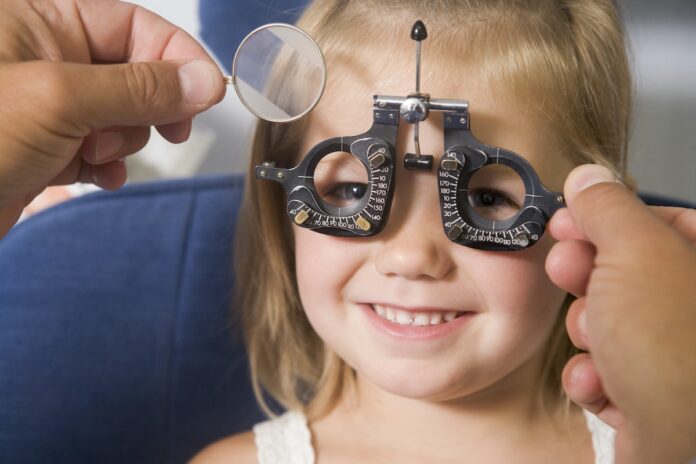Myopia (nearsightedness) is indeed becoming a widespread issue, particularly among children. Several factors, including increased screen time, reduced outdoor activities, and even genetics, contribute to this rise. To combat and prevent the progression of myopia, it’s essential to adopt and promote some key protective measures for eye health. Let’s break them down:
1. Limit Screen Time
- Why?: Excessive screen time (phones, tablets, TVs, and computers) strains the eyes, causing them to focus on close objects for extended periods, which can accelerate myopia.
- Tips:
- Implement the 20-20-20 rule: Every 20 minutes of screen time, take a 20-second break to look at something 20 feet away.
- Keep screens at least an arm’s length away and at eye level to avoid strain.
- Encourage more frequent breaks from screens to give eyes a rest.
2. Increase Outdoor Activities
- Why?: Natural sunlight and outdoor distances provide variety in visual focus, helping to prevent or slow myopia progression.
- Tips:
- Spend at least 2 hours outdoors each day. Outdoor playtime is proven to have protective effects against myopia.
- Activities like walking, cycling, or playing sports are excellent for both the body and eyes.
3. Good Lighting
- Why?: Reading or working in dim light makes the eyes work harder, increasing eye strain.
- Tips:
- Ensure there is sufficient ambient light in the room when reading or doing close-up tasks.
- Avoid reading in low light or from screens in complete darkness, as this increases strain on the eyes.
4. Proper Reading Habits
- Why?: Holding books or screens too close can increase the risk of developing myopia.
- Tips:
- Keep reading materials about 30–40 cm (12–16 inches) away from the eyes.
- Maintain good posture, avoid slouching or bringing reading materials too close to the face.
5. Regular Eye Checkups
- Why?: Early detection of vision issues can help prevent further deterioration and allow timely intervention.
- Tips:
- Schedule annual eye exams for children to monitor their vision health and detect any signs of myopia early on.
- Ensure children wear the prescribed corrective lenses, if necessary, to avoid eye strain and worsening of vision.
6. Healthy Diet for Eye Health
- Why?: Nutrients such as Vitamin A, omega-3 fatty acids, and antioxidants are essential for maintaining healthy vision.
- Tips:
- Include foods like carrots, leafy greens, fish, eggs, and nuts in the diet to provide vital nutrients for eye health.
- Encourage a balanced diet to support overall well-being, which indirectly benefits eye health.
7. Manage Time on Homework and Close-up Work
- Why?: Prolonged close-up work, such as reading or writing, can contribute to eye strain.
- Tips:
- Ensure children take frequent breaks during homework sessions.
- Encourage children to switch between close-up tasks and distant viewing to give their eyes a break.
8. Corrective Lenses and Treatment Options
- Why?: Wearing corrective lenses that are up-to-date ensures that the eyes don’t have to work harder than necessary.
- Tips:
- If prescribed glasses or contact lenses, ensure children wear them as recommended.
- Consider specialized treatments like orthokeratology (Ortho-K) or multifocal lenses to manage myopia progression.
By following these measures, children can significantly reduce the risk of myopia progression and maintain healthier eyesight. Encouraging a balanced approach to screen time, outdoor activities, and good eye habits can make a big difference in protecting their vision for the long term.



